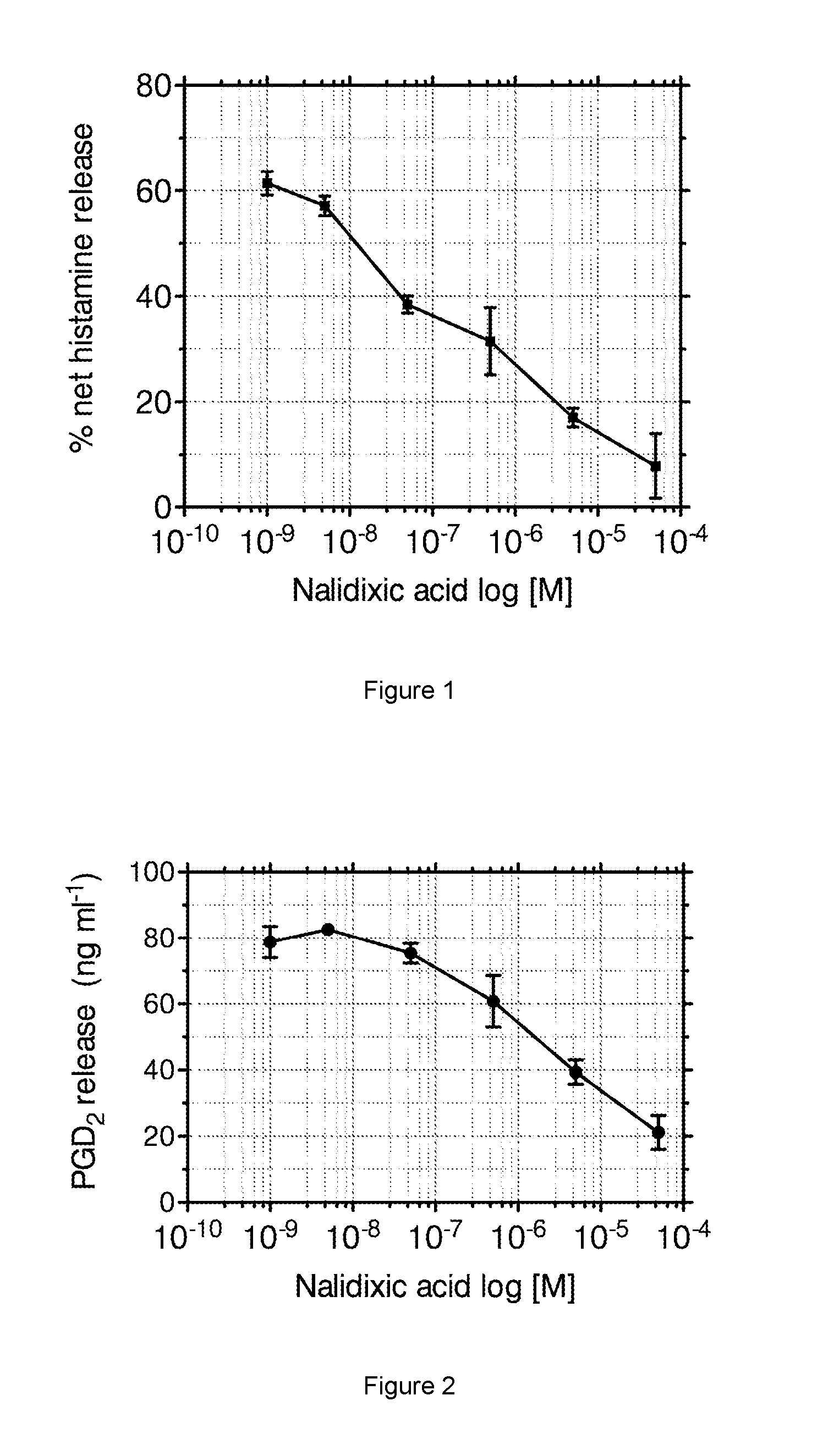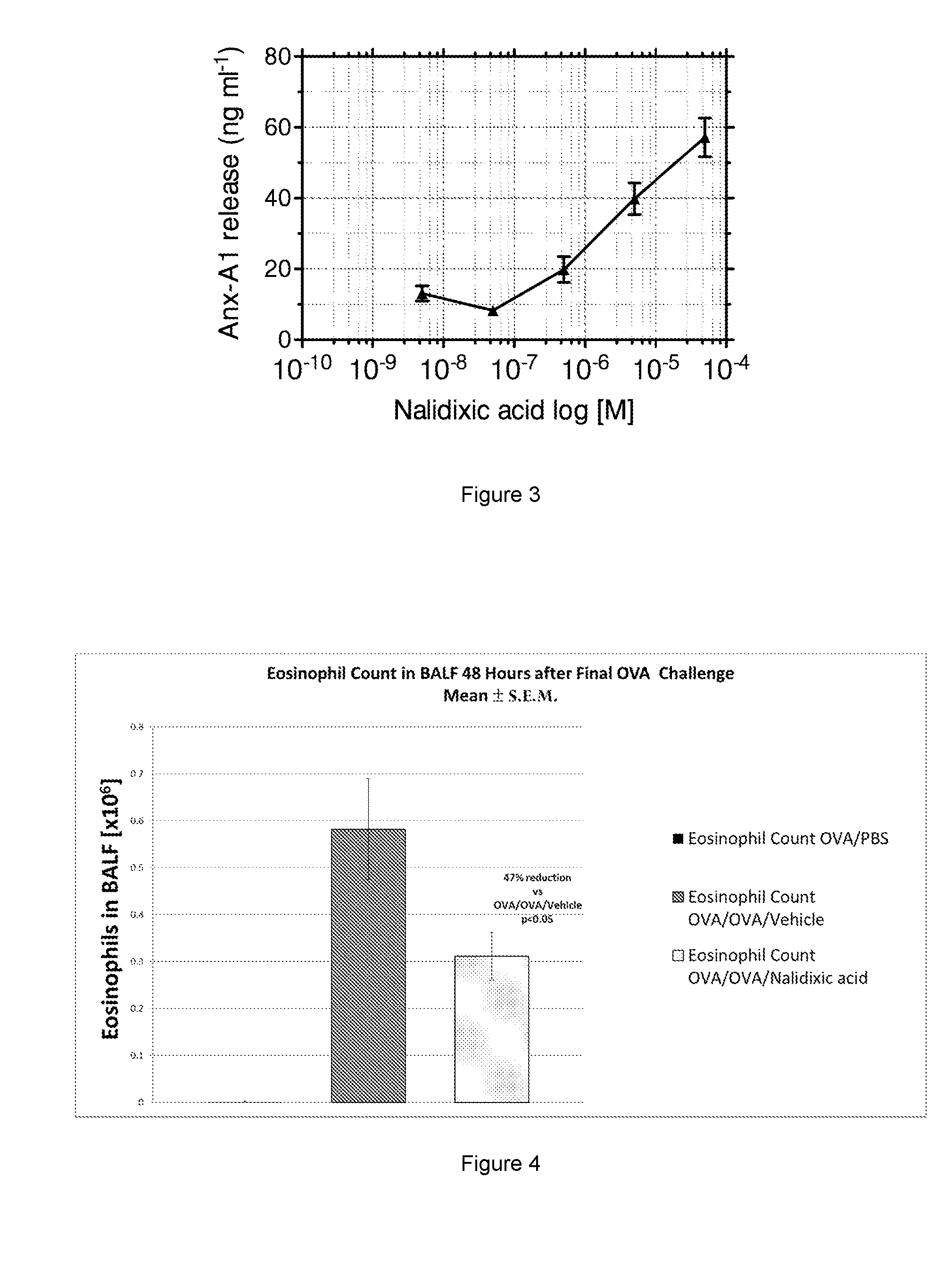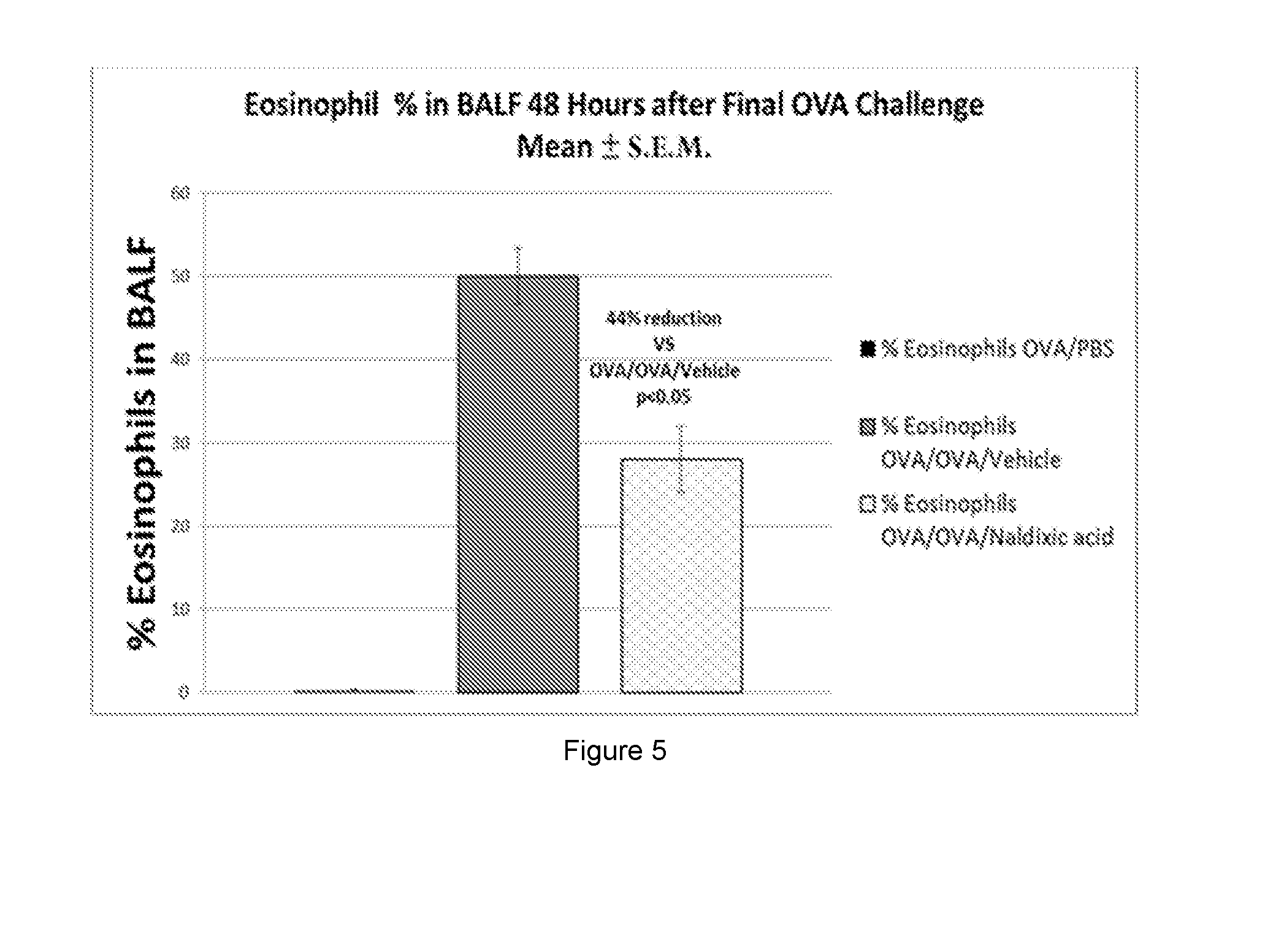The Treatment of Inflammatory Disorders
a technology of nalidixic acid and analogues, which is applied in the direction of antibacterial agents, peptide/protein ingredients, antivirals, etc., can solve the problems of poor systemic pharmacokinetics, and achieve the effect of enhancing the anti-inflammatory activity of endogenous annexin-a1, rapid excretion, and poor systemic pharmacokinetics
- Summary
- Abstract
- Description
- Claims
- Application Information
AI Technical Summary
Benefits of technology
Problems solved by technology
Method used
Image
Examples
example 1
The Inhibition of Histamine Release from Human Mast Cells by Nalidixic Acid
[0062]Protocol: Human derived cord mast cells were cultured using the following method.
[0063]Commercially available CD34+ stem cells were cultured for 2 weeks in StemSpan (StemCell Technologies, Grenoble, France) serum-free medium supplemented with 100 ng / ml human SCF, 50 ng / ml IL-6 and 1 ng / ml IL-3, and 100 μg / ml penicillin / streptomycin (Peprotech, London, UK). After eight weeks, cells were cultured in StemSpan with 10% FCS. The cells were passaged into new medium every week. Cells were used for experiments between 11 and 18 weeks following confirmation by microscopic examination, c-kit and FcRε1 staining (by FACS), of mast cell morphology. For assessment of drug effects, Nalidixic Acid was incubated for 5 min with aliquots of 2×105 CDMCs (cord derived mast cells) cultured in 10% FCS medium.
Measurement of Histamine Release
[0064]A commercially-available enzyme immunoassay was used to detect and quantify hista...
example 2
Inhibition of Prostaglandin D2 Release Form Human Mast Cells by Nalidixic Acid
[0066]Human cord derived mast cells were cultured using the methodology described in Example 1.
Measurement of PGD2 Release
[0067]A commercially-available enzyme immunoassay (Cayman Chemical, Michigan, USA) was used to detect and quantify PGD2 released in the supernatant. The assay was conducted following the manufacturer protocols. A standard curve ranging from 78-10,000 pg / ml PGD2 was prepared using the reagent provided and the optical density was then read within 60 min in a microplate reader (at 405 nm).
[0068]The results from these experiments are shown in FIG. 2. The data illustrates a dose related inhibition by Nalidixic acid of the inflammatory prostanoid PGD2
example 3
Nalidixic Acid Promotes the Release of Annexin-A1 from Human Mast Cells
[0069]Human cord derived mast cells were cultured using the methodology described in Example 1.
[0070]Anx-A1 protein levels in conditioned medium were determined by ELISA. Briefly, 96-well flat-bottomed ELISA plates (Greiner, Gloucestershire, UK) were coated with 1 μg anti-Anx-A1 mAb 1B in bicarbonate buffer (pH 9.6) and incubated overnight at 4° C. After washing in the bicarbonate buffer, potentially uncoated sites were blocked with 100 μL of PBS containing 1% BSA for 1h at room temperature. Sample aliquots (100 μL) or Anx-A1 standard solutions (prepared in 0.1% Tween-20 in PBS; concentration ranging between 10 and 0.001 μg / mL) were added for 1h at 37° C. After extensive washing in PBS / Tween-20, 100 μL of a polyclonal rabbit anti-human Anx-A1 serum (Zymed, Invitrogen, Paisley, UK; diluted 1:1000 in PBS / Tween-20) was added (1h at 37° C.) prior to incubation with donkey anti-rabbit 1 gG conjugated to alkaline phosp...
PUM
| Property | Measurement | Unit |
|---|---|---|
| temperature | aaaaa | aaaaa |
| pH | aaaaa | aaaaa |
| volumes | aaaaa | aaaaa |
Abstract
Description
Claims
Application Information
 Login to View More
Login to View More - R&D
- Intellectual Property
- Life Sciences
- Materials
- Tech Scout
- Unparalleled Data Quality
- Higher Quality Content
- 60% Fewer Hallucinations
Browse by: Latest US Patents, China's latest patents, Technical Efficacy Thesaurus, Application Domain, Technology Topic, Popular Technical Reports.
© 2025 PatSnap. All rights reserved.Legal|Privacy policy|Modern Slavery Act Transparency Statement|Sitemap|About US| Contact US: help@patsnap.com



